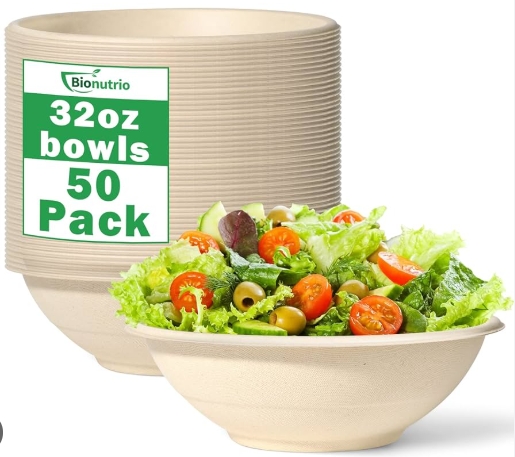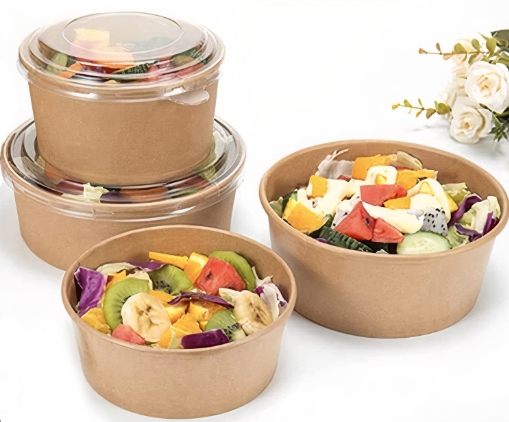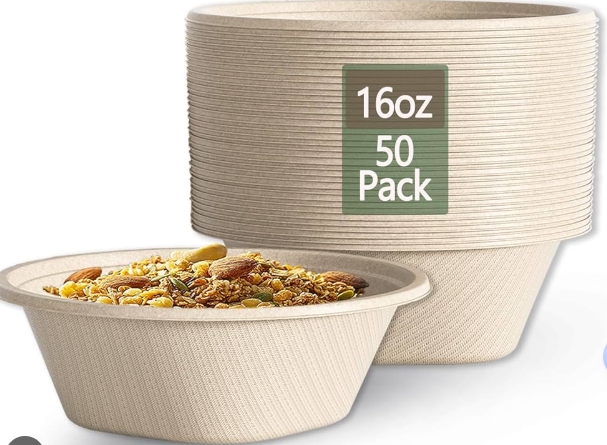
Content Menu
● The Role of Technology in Product Development
● Advanced Materials and Their Impact
● Automation in Manufacturing Processes
>> Key automation benefits include:
● Quality Control Innovations
>> Modern quality assurance solutions include:
● Customization and Design Flexibility
● Sustainability and Environmental Impact
>> Sustainable advantages powered by technology:
● Case Studies: Success Stories from the Industry
>> Example 1: Smart Seal Technology Reduces Food Waste
>> Example 2: Fully Compostable Bowl Line Launched
>> Example 3: Digital Twin Technology Enhances Analytics
● Challenges and Considerations
● Conclusion
● Frequently Asked Questions
>> 1. How does technology improve the safety of bowl and lid products?
>> 2. What types of materials are most influenced by technological advances in this industry?
>> 3. Can small manufacturers also benefit from investing in new technology?
>> 4. What role does customization play in bowl and lid manufacturing?
>> 5. How are environmental concerns addressed through technology in the production of bowls and lids?
The manufacturing industry is experiencing a massive transformation, thanks largely to technological advancements. Among the numerous product categories impacted, bowl and lid products stand out as items where quality, safety, sustainability, and design are increasingly prioritized. These upgrades are vital because such products are extensively used, especially in the food, restaurant, and hospitality industries, where durability and hygiene are non-negotiable.
Manufacturers are now turning to cutting-edge technology to keep up with rising consumer expectations and stringent industry standards. From smart automation systems to revolutionary materials and digital design platforms, investment in technology is helping manufacturers enhance every aspect of bowl and lid production.
This article explores the different ways in which technology is improving the quality, performance, and sustainability of bowl and lid products, and why these innovations matter for both producers and consumers.

The Role of Technology in Product Development
Modern technology is disrupting traditional product development methods. Historically, product design relied on manual sketches and static molds. Any change required extensive retooling, costing both time and money. Today, digital platforms and design software allow designers to test shapes, sizes, and tolerances in virtual simulations before a single prototype is made.
These tools enable product developers to analyze how a bowl or lid responds to various temperatures, liquids, or stacking pressures. Rapid prototyping through 3D printing or CNC machining allows for immediate iterations, making designs more accurate and market-ready. The use of computer-aided design (CAD) systems helps in producing consistently high-quality molds, resulting in end products with better fits, seals, and finishes.
Technology in this early stage of production ensures that final products are engineered with precision, functionality, and user comfort in mind.
Advanced Materials and Their Impact
Technology has also played a vital role in transforming the materials used in manufacturing bowl and lid products. Traditional petroleum-based plastics, although prevalent, are increasingly being replaced or improved upon using advanced formulations.
Innovations in materials science have led to the development of:
- Heat-Resistant Polymers for microwave-safe or dishwasher-safe applications
- Biodegradable Materials that break down naturally without harming the environment
- Recyclable and Reusable Composites that offer durability and sustainability
In addition to being more environmentally friendly, these materials also improve product performance. For example, better thermal insulation ensures that hot or cold food remains at optimal temperatures for longer durations. Similarly, lids with enhanced sealing properties minimize the risk of leaks or spills.
Material innovation allows manufacturers to tailor products for specific industries, whether it's food delivery, fast-casual dining, or medical applications, all while maintaining exceptional quality standards.
Automation in Manufacturing Processes
Automation is redefining how production lines are operated. Fully automated systems, guided by programmable logic controllers (PLCs) and industrial robotics, now handle everything from molding and trimming to stacking and packaging.
Key automation benefits include:
- Precision: Automated machines produce parts with a consistently minimal margin of error, resulting in products that fit and function exactly as intended.
- Speed: Automation dramatically increases production throughput, allowing companies to meet high demands without compromising product quality.
- Workplace Safety: Machines effectively carry out repetitive tasks that may have previously led to injuries or strain for human workers.
- Cost Efficiency: Although initial costs can be high, automation minimizes waste and labor costs over time.
Advanced production lines are also capable of self-diagnosing issues and auto-correcting defects, reducing downtime and ensuring uninterrupted, quality-controlled manufacturing.
Quality Control Innovations
Enhanced quality control procedures are a direct result of digital transformation. Rather than relying solely on manual inspections, today's manufacturing setups deploy sophisticated tools and sensors that monitor product parameters in real time.
Modern quality assurance solutions include:
- High-Speed Cameras to detect invisible defects or inconsistencies on the production line
- Laser Scanning Systems to verify shape, dimensions, thickness, and material integrity
- Edge Sealing and Leak Testing Machines to evaluate how well a lid seals with its matching bowl
Moreover, digital analytics platforms automatically compile this data, allowing for trend analysis and early detection of systemic issues. Manufacturers can quickly adjust production parameters to maintain quality and eliminate waste, resulting in more reliable end products and higher customer satisfaction rates.
Customization and Design Flexibility
Thanks to digital design and smart manufacturing, mass customization is now a realistic option for many producers. Consumers want more than just functionality—they want aesthetics, branding, and unique experiences. By investing in modern design technologies, manufacturers can make bowls and lids in various colors, textures, sizes, and shapes to meet those unique consumer demands.
3D modeling tools allow the easy customization of logo placement, color variants, and embossing, which is perfect for businesses that want branded packaging. In addition, quick mold-changing machines enable short production runs without long setup times, facilitating limited edition designs or promotional packaging.
Customization drives brand loyalty, enhances market differentiation, and allows businesses to be more responsive to seasonal or regional preferences.

Sustainability and Environmental Impact
With growing environmental consciousness, the demand for sustainable packaging is at an all-time high. Technological investments are enabling powerful changes in how manufacturers approach sustainability goals.
Sustainable advantages powered by technology:
- Efficient Resource Utilization: Smart machinery reduces raw material usage while maintaining quality.
- Eco-Friendly Materials: Bioplastics, plant-based polymers, and recycled inputs are viable without sacrificing performance.
- Energy Efficiency: New-generation machines consume less power and integrate energy-recovery systems.
- Recyclability: Clear labeling and standardized materials increase the likelihood that bowls and lids are properly recycled.
Manufacturers who adopt green technologies not only meet regulatory standards but also appeal to a growing demographic of environmentally aware consumers.
Case Studies: Success Stories from the Industry
Example 1: Smart Seal Technology Reduces Food Waste
A manufacturer implemented a new sealing design using AI-driven analytics and advanced molding techniques. The redesign delivered tighter seals and noticeably reduced leakage complaints, leading to greater customer satisfaction and lower food-loss rates.
Example 2: Fully Compostable Bowl Line Launched
An enterprise specializing in eco-packaging utilized bioengineered materials and automated systems to launch a 100% compostable line of bowls and lids. The launch gained traction with environmentally focused food chains and boosted the company's market share.
Example 3: Digital Twin Technology Enhances Analytics
By integrating digital twin technology, one packaging plant mirrored its production line in software, allowing engineers to simulate performance and identify flaws before they happened. This predictive maintenance approach reduced downtime and drastically improved batch quality.
Challenges and Considerations
While refreshing manufacturing systems provides numerous advantages, there are challenges to consider:
- Investment Cost: The financial outlay can be significant and may strain small to medium enterprises.
- Training Needs: Staff often need to be retrained to operate sophisticated equipment or interpret quality data.
- Complex Implementation: Integrating new technologies without disrupting existing processes requires careful planning.
- Keeping Up with Innovation: The fast pace of advancements demands continual updates and flexibility.
To navigate these challenges, manufacturers must commit to long-term planning, workforce investment, and a strategic implementation roadmap.
Conclusion
Technological investment is revolutionizing the bowl and lid manufacturing sector. From digital design and smart materials to automation and sustainability, new technologies are solving critical challenges and setting new standards for performance, safety, and environmental responsibility.
For manufacturers, staying abreast of these developments is no longer optional; it is essential for maintaining competitiveness, meeting regulatory demands, and delivering superior products to an increasingly discerning consumer base.
Producers who recognize the power of innovation and act boldly to incorporate the latest tools and systems will shape the future of the industry—and the planet.

Frequently Asked Questions
1. How does technology improve the safety of bowl and lid products?
Technology enhances safety through precise manufacturing techniques, improved sealing capabilities, and automated quality control systems. These innovations reduce the risks of leaks, contamination, and product failures, ensuring better protection for food and users alike.
2. What types of materials are most influenced by technological advances in this industry?
Advanced polymers, biodegradable composites, and recyclable plastics are products of modern material science. These materials offer better durability, safety, and ecological impact than traditional options.
3. Can small manufacturers also benefit from investing in new technology?
Yes, smaller producers can still benefit by adopting scalable solutions suited to their capacity—such as desktop 3D printers, modular automation, or cloud-based data analytics platforms. Gradual investment strategies can yield sizeable productivity and quality benefits.
4. What role does customization play in bowl and lid manufacturing?
Customization allows manufacturers to meet specific market needs, support branding efforts, and stand out in competitive markets. Technology enables easy personalization without interrupting efficiency or production schedules.
5. How are environmental concerns addressed through technology in the production of bowls and lids?
Technological innovations help reduce waste, lower emissions, and promote the use of green materials. Energy-efficient machines and intelligent waste management systems also contribute significantly to a reduced environmental footprint.

















